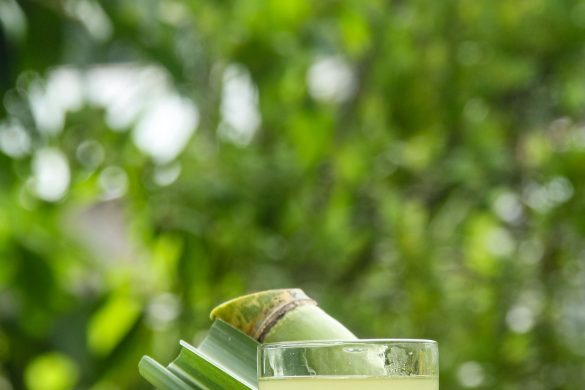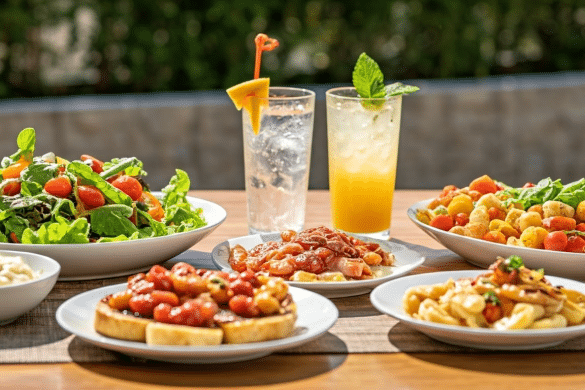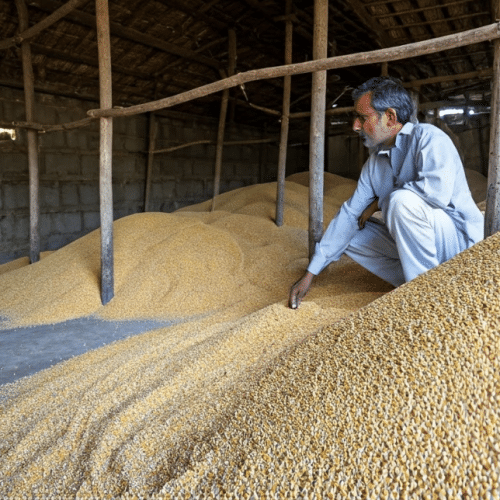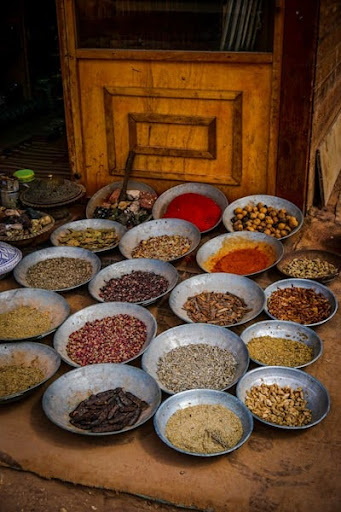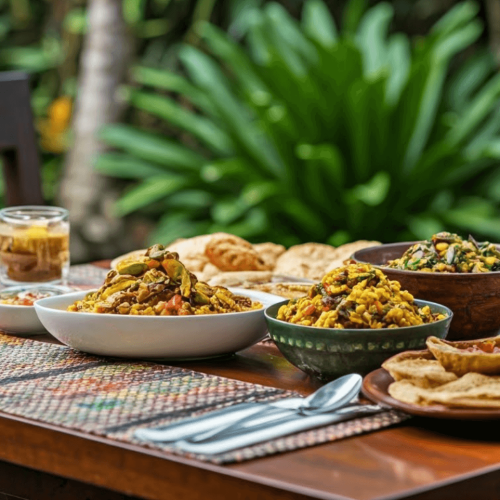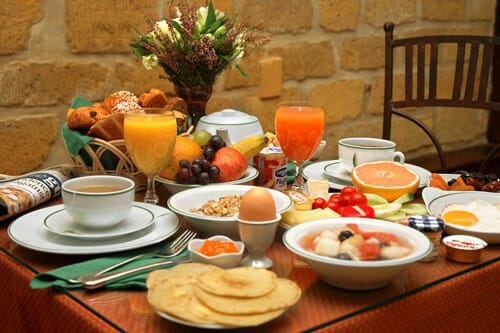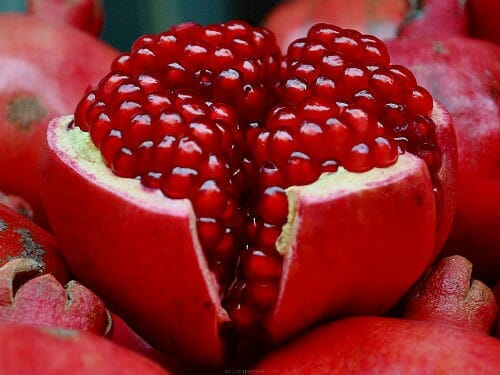Goan cuisine is a thrilling blend of Portuguese, Indian, and Konkan influences, offering a rich tapestry of flavours in this Indian state. With rice, seafood, coconut, and local spices sourced from its lush landscape along the Arabian Sea coast, goan dishes deliver a unique taste that captures the region’s cultural fusion. From the spiciness of vindaloos to the sweetness of Bebinca, each dish tells a historical and culinary heritage story. Let’s try some Goan dishes on this blog.
10 Irresistible Goan Dishes You Must Savor at Least Once
Let your taste buds embark on a journey of a lifetime as we explore dishes. While some might find these unfamiliar, these are the top 10 must-try Goan dish adventures. Each dish has an incredible history and a burst of flavours, promising to make your Goan food expedition memorable.
1. Goan Fish Curry
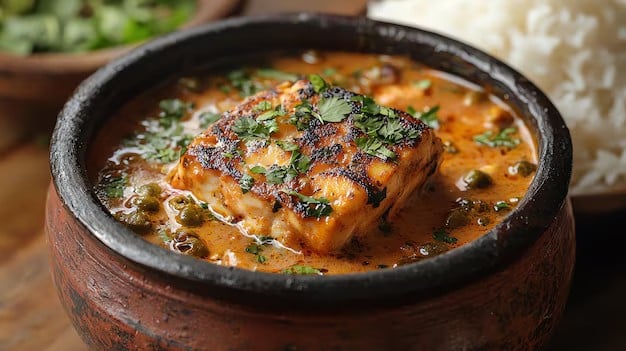
Tangy Coconut Based Seafood Dish
Goa’s Fish Curry is a staple that features Pomfret, mackerel, and raw mango in a rich coconut curry with turmeric and Goan kokum. This dish pairs perfectly with steamed rice and is beloved by locals for its bold taste influenced by the Arabian coast. Pomfret or Kingfish can be used to prepare this traditional Goan dish. Raw mango adds a delightful tanginess, while kokum enhances its rich flavor. This dish is best enjoyed with rice and pickles, making it a flavorful and satisfying meal.
2. Pork Vindaloo
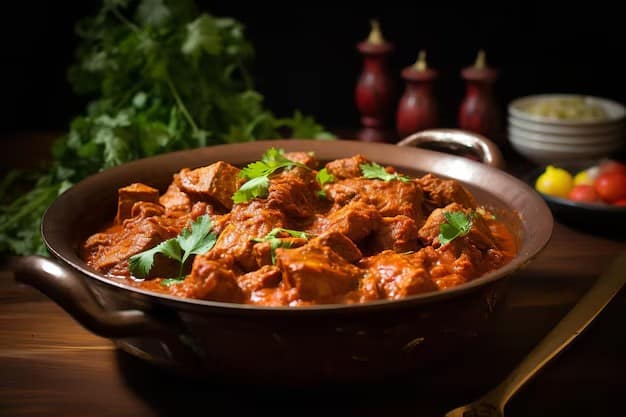
Spicy Goan Pork Curry
Vindahlo, now known as Goan Pork Vindaloo, is a Portuguese-inspired fusion dish. Initially, a sailor’s meal marinated in a flavorful wine vinegar and garlic marinade evolved into a spicy delight by Goans using palm vinegar. Also called ‘vinha d’alhos,’ this curry features pork, onions, chillies, turmeric, and vinegar. It boasts a robust spice flavour from a unique masala blend and is best paired with Goan pav. An alternate, sweeter version includes potatoes, giving rise to its name ‘Vindaloo.’ The meat and masala mixture is left overnight to deepen the flavours.
3. Chicken Cafreal
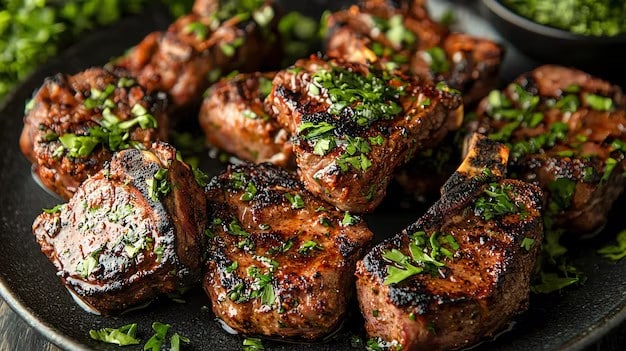
Goan Marinated Chicken
Chicken Cafreal, a spicy green delight, originates from Goa but has roots in Mozambique. Its unique taste comes from green chillies, herbs, spices, ginger, and garlic. The dish is known for its vibrant green colour, and it is best enjoyed with salads or crusty katre pao on its own as it is rich. Influenced by African Portuguese traders, Chicken Cafreal is a flavorful dish with a fascinating history.
4. Prawn Balchão
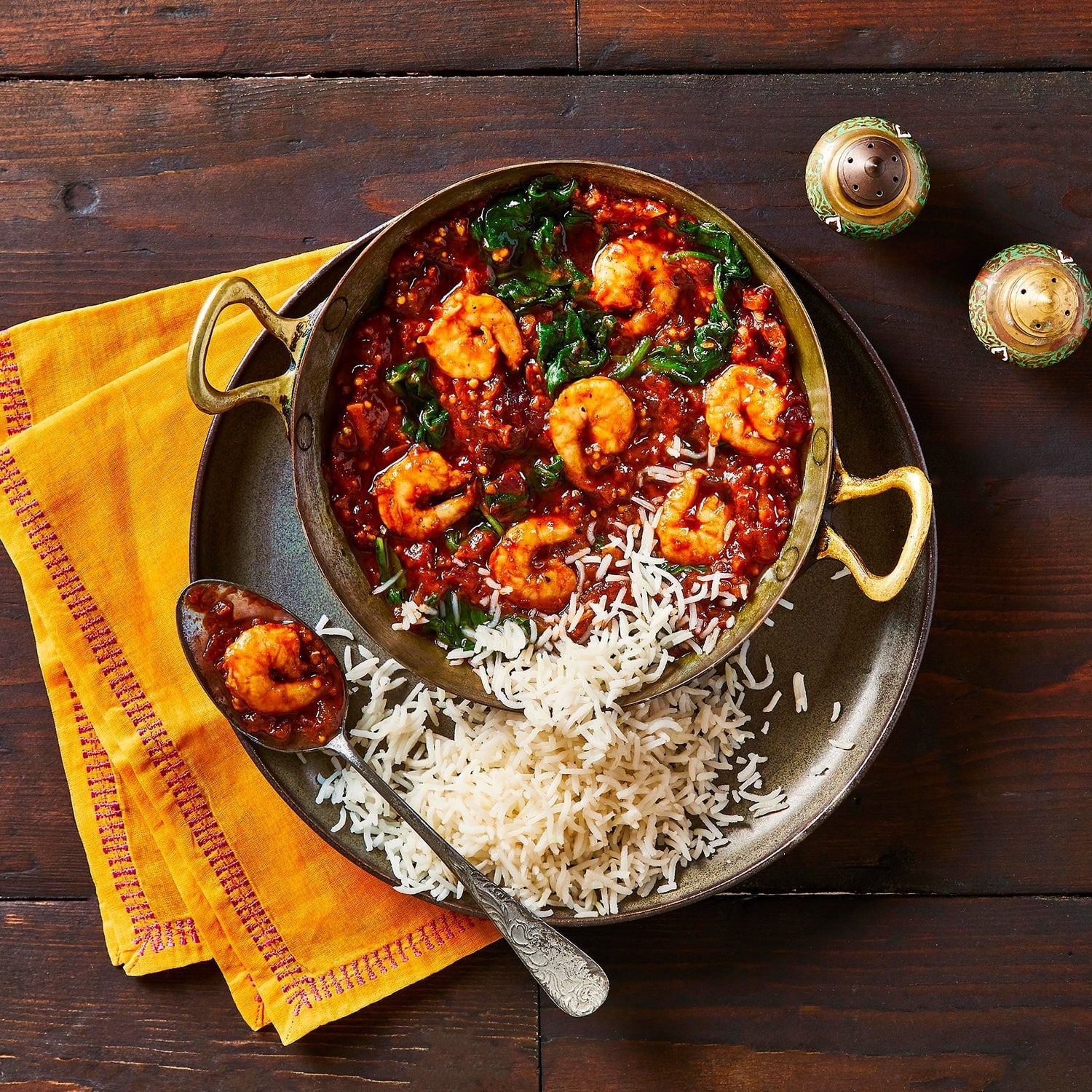
Goan Pickled Spicy Prawn Dish
Prawn Balchão is a Goan shrimp pickle marinated in a spicy, tangy sauce of tomatoes, caramelised onions, and coconut toddy vinegar. It stays fresh without refrigeration for days and complements any main course. Enjoy it with steamed rice or toasted bread coated with semolina. Originating from the Portuguese regime, Balchão reflects a unique Goan-Portuguese fusion.
5. Chicken Xacuti
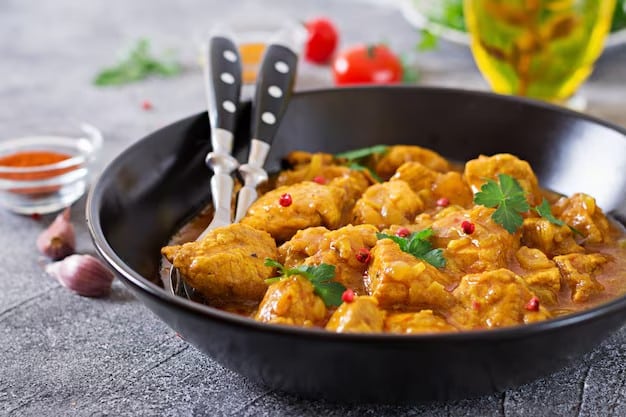
Spicy Goan Coconut Chicken Curry
Chicken Xacuti (Shakuti) is a spicy and tangy Goan curry adored for its unique blend of poppy seeds, coconut, and red chillies. The addition of Kashmiri chillies gives it an intense heat and vibrant colour. While chicken is the most common protein, mutton, beef, and fish can also be used. Served with rice or poee, Chicken Xacuti is a must-try dish that showcases the authentic, bold flavours of North Goa.
6. Crab Xec Xec
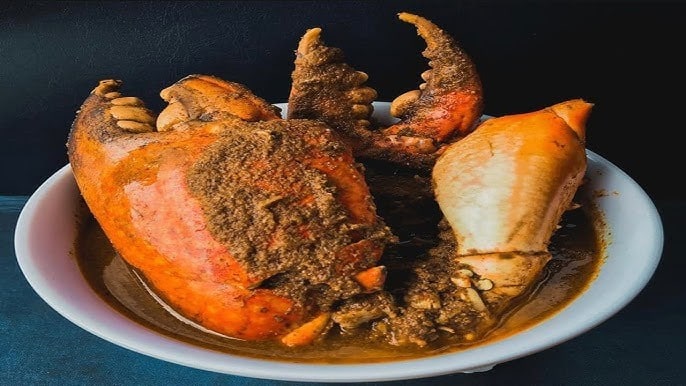
Goan Crab Curry
Delve into the depths of Goan cuisine with Crab Xacuti Xec, an aromatic crab curry that combines grated coconut and bold spices for a unique, unforgettable flavour. The spice level can be adjusted to suit personal tastes, while the gravy’s richness comes from roasted ground coconut. Similar in preparation to Chicken Xacuti, Crab Xacuti Xec requires extra care when handling the delicate crab. Homemade xacuti masala ensures an authentic Goan experience, making it a must-try dish, traditionally served with rice or chapatis.
7. Sanna
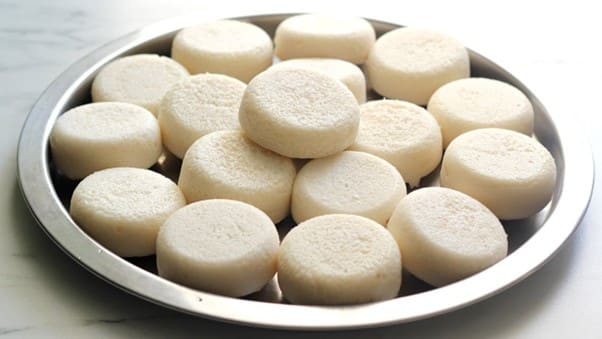
Goan Steamed Rice and Coconut Cake
The Goan Sanna, a spin on the traditional idli, is a sweet surprise. These rice cakes have a twist in taste, featuring a sweet linage of coconut flavour. Authentic Goan rice prepares these fluffy delights, relished with almost all Goan curries and flatbreads.
8. Chris Pão
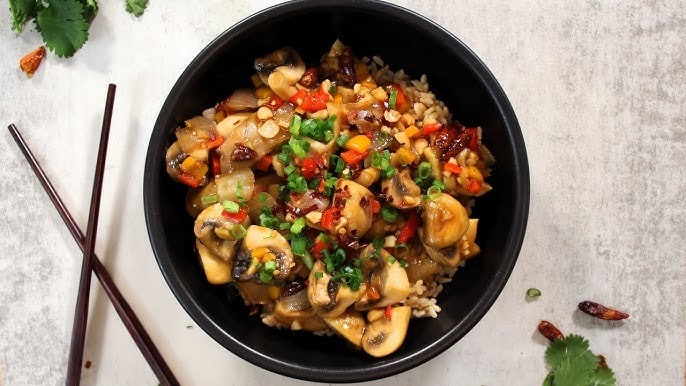
Goan Chorizo Bread Roll
Street food in each Goan fair or fiesta, Choris Pão is locally spiced Portuguese chouriço stuffed in Goan bread – poi. The spicy, tangy sausage pairs brilliantly with the soft bread, making it a hit among locals and tourists alike.
9. Fish Recheado
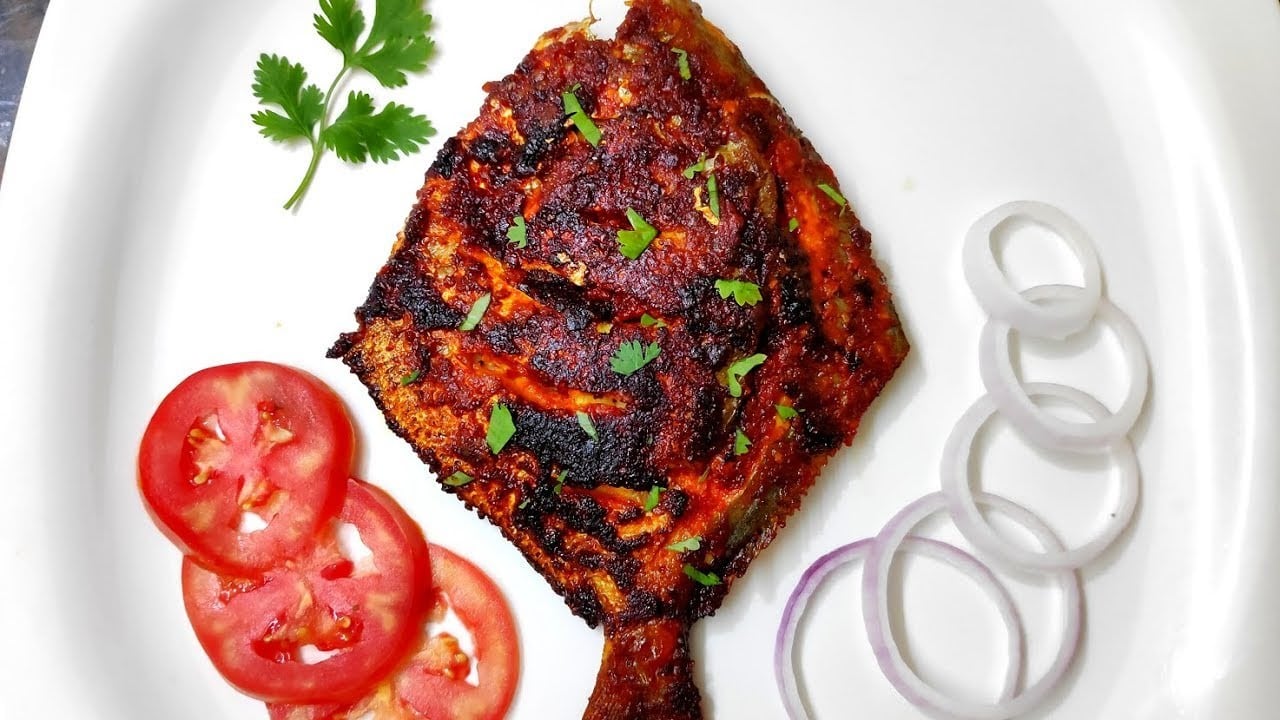
Goan Stuffed Spicy Fish Dish
Derived from the Portuguese word ‘stuffed,’ Fish Recheado stays true to its name. It features pomfret filled with tangy masala and onions, wrapped in a tinge of tartness. This spicy delicacy can be served with warm Goan bread or plain rice.
10. Bebinca
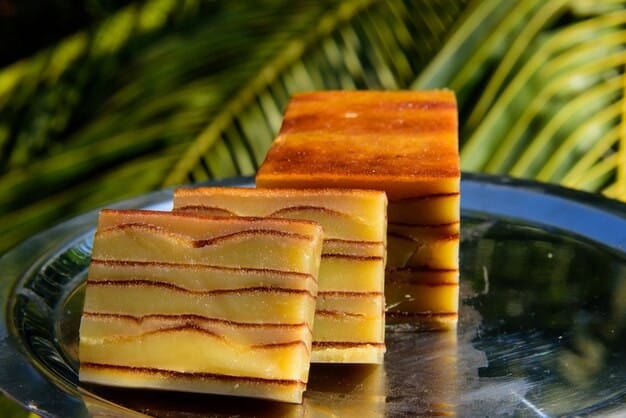
Traditional Goan Layered Dessert
Bebinca, Goa’s iconic dessert, is a rich, multi-layered cake made with coconut milk, sugar, eggs, and flour. Caramelised sugar adds extra depth. Typically served warm with vanilla ice cream, it’s a must-have during Christmas and festive celebrations. The laborious process of baking each layer individually takes a long time and ensures its unique texture. Bebinca is a beloved treat showcasing Goan cuisine’s sweet side, often sold in intricately designed earthen pots.
Conclusion
Each bite in a Goan dish is a glimpse into its culturally rich past, a fusion of age-old traditions, a story cooked over centuries. Fresh seafood comes directly from the Arabian Sea, coconuts and rice lend their characteristic flavour, and the myriad of locally grown spices come together in unique masalas – the essence of Goan Cuisine lies in these elements and beyond. Every person visiting Goa must try these dishes at least once. But we know that one trip isn’t enough to explore the stunningly diverse universe of Goan cuisine that transcends boundaries and is truly a feast for the soul.
Frequently Asked Questions
Which Goan drink should I try?
You must try Goa’s iconic cashew fruit spirit, Feni. It encapsulates the coastal spirit of Goa and is an integral ingredient in many Goan dishes.
What are the traditional dishes of Goan cuisine?
Traditional Goan dishes include Vindaloo, Xacuti, Sorpotel, Cafreal, and Bebinca. Due to Goa’s rich history and cultural heritage, these dishes are influenced by a mix of Konkani, Portuguese, Brazilian, African, and British cuisines.
Are there vegetarian options in Goan cuisine?
Yes, despite being famous for seafood, Goan cuisine also offers delicious vegetarian dishes such as Khatkhatem (vegetable stew), Bhaji (a local spinach variant), Mushroom Xacuti, and Samabrachi Kodi (Dry Prawns curry).


